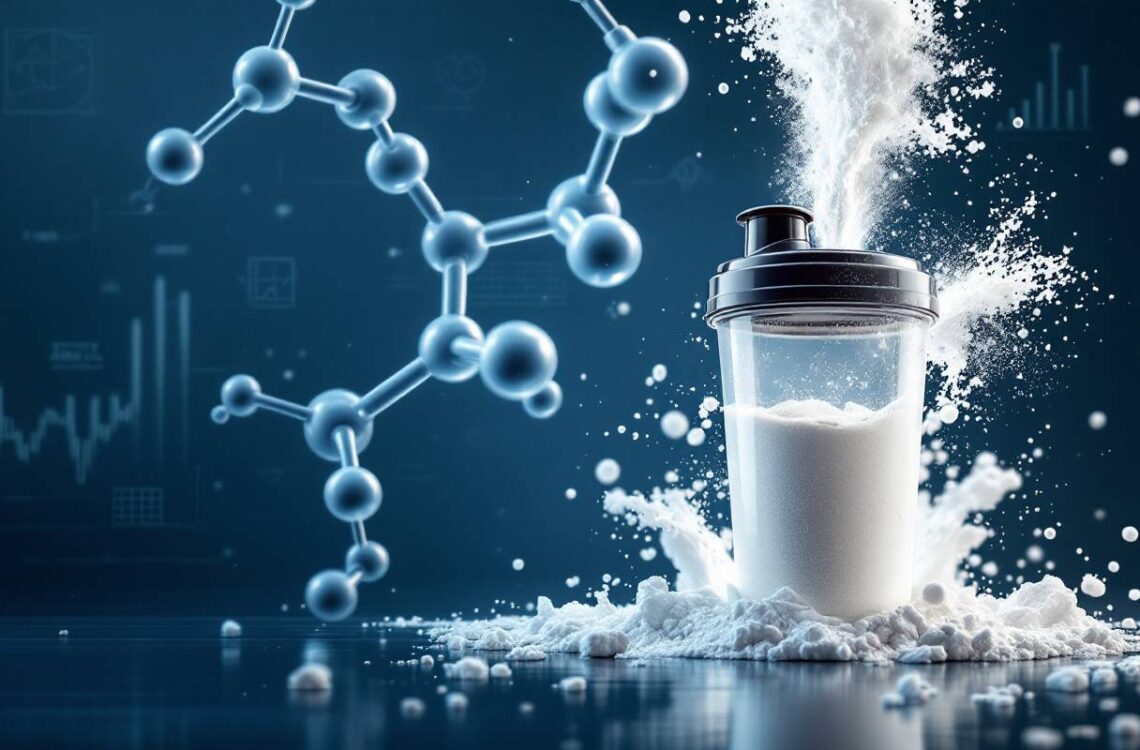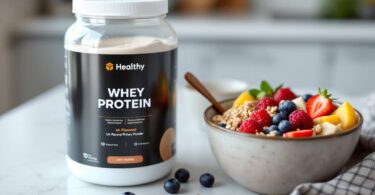Ready to navigate the world of protein supplementation with confidence?
Whether you’re a dedicated gym enthusiast, an athlete in training, or someone simply looking to boost their nutrition game, understanding whey protein powders is your first step toward optimal results.
This powerhouse supplement has become the gold standard in fitness nutrition, and for good reason. Packed with essential amino acids and backed by decades of scientific research, whey protein isn’t just another supplement – it’s a game-changer for muscle growth, recovery, and overall fitness success. Let’s dive into everything you need to know about choosing and using whey protein powders to maximize your health and fitness journey!
Whey Protein Powders: An Overview
Whey protein powders are a go-to option for many in the fitness scene, giving folks an easy way to ramp up their protein levels. Whether you’re a gym rat, an athlete, or just someone trying not to eat instant noodles every night, knowing your stuff about whey protein can help you smash those fitness goals like a champ.
Why Protein Matters
Protein is that backbone that keeps your muscles in check, fixes up those tissues, and makes enzymes and hormones dance like they should. It’s basically the unsung hero of your health story. For those who push their bodies like they’re training for the Olympics, getting enough protein is like unlockin’ the next level on your performance and recovery game.
| What’s it do? | How protein helps |
| – | – |
| Build Muscles | Fixes and grows those muscles up big and strong |
| Make Hormones | Gets those hormones goin’ just right |
| Run Enzymes | Kicks off those chemical reactions |
| Fight Germs | Keeps that immune system sharp |
Getting a good dose of protein every day can be a real chore, especially if you’re dodging meat or have diet rules tighter than grandma’s purse strings. That’s where whey protein powders step in, like a reliable sidekick, ready to meet those protein needs without a ton of fuss.
Whey Protein Powders and Fitness Goals
Made from milk, whey protein powders bring with them a load of essential amino acids, the ones you can’t just whip up yourself. They’re super popular among those who live and breathe fitness, aiming for all sorts of health and body goals.
For Gaining Muscle: Whey protein is full of leucine, that amino acid everyone’s always hyped about for muscle growth. Throwing whey protein into your diet is like tossing steroids but, you know, legal and safe. Perfect for folks who want to bulk up faster than popcorn in a microwave. If you won’t to get more into it, here’s the lowdown on whey protein for lean muscle.
For Losing Fat: Whey protein can play the weight loss game, too. It helps you feel full and keeps you from losing muscle while trimming the fat. We’ve got more on this if you’re curious: whey protein for weight loss.
For Bouncing Back: After you’ve gone all beast mode, recovery is crucial. Whey protein is like a fast pass for your muscles, helping them bounce back quick. For those who want the nitty-gritty, hit up our section on whey protein absorption.
Once you get the hang of what whey protein can do, picking the right one’s a piece of cake — no actual cake though, sorry! If you’re new to this whole rodeo, our whey protein guide has got your back covered with the basics.
Adding whey protein powders to your routine doesn’t have to be rocket science. For some tasty ideas, peruse our stash of whey protein smoothie recipes. Go ahead, blend away!
Types of Whey Protein Powders
Picking the right protein powder isn’t just about picking a flavor. You gotta know what you’re putting in that shaker cup! Let’s dish out the scoop on Whey Protein Concentrate, Whey Protein Isolate, and Whey Protein Hydrolysate.
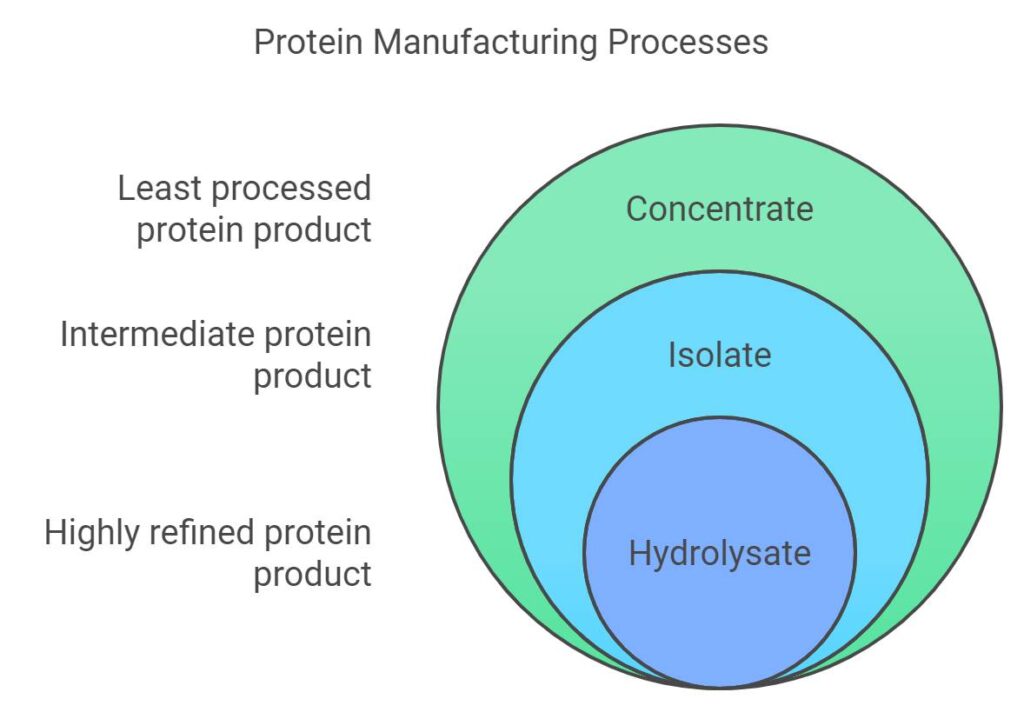
“The processing method of whey protein significantly affects its biological properties and applications in health and disease. Understanding these differences is crucial for optimal supplementation strategies.”
Dr. Robert Wildman, Chief Science Officer at Dymatize Nutrition
Whey Protein Concentrate
Whey Protein Concentrate (WPC) is the basic option you see on every shelf and for good reason. This version of whey gets a light touch on processing, so you get a mix of protein, along with some lactose and fat thrown in.
What You’ll Find in WPC:
- Protein content hitting between 70% – 80%
- Lots of naturally-occurring goodies
- Yup, there’s lactose and fat in there too
| Nutrient | Amount (per serving) |
|---|---|
| Protein | 70% – 80% |
| Lactose | 4% – 8% |
| Fat | 3% – 7% |
If your wallet’s on the lighter side or if you’re cool with some extra lactose and fat, WPC might be your new best friend. Fitness buffs love this stuff! If you’re curious about how WPC stacks up against other types, check out our page on whey isolate vs concentrate.
Whey Protein Isolate
Whey Protein Isolate (WPI) kicks it up a notch by cutting out most of the fat and lactose, leaving you with a whopping protein content.
WPI Highlights:
- Over 90% protein – now that’s hardcore!
- Lactose, begone!
- Almost no fat to worry about
| Nutrient | Amount (per serving) |
|---|---|
| Protein | 90% or higher |
| Lactose | Less than 1% |
| Fat | Less than 1% |
Got lactose intolerance? WPI is probably your go-to choice. It’s also great for anyone hunting for protein with laser focus. For tips on how to pick the perfect protein, dive into our article on how to choose whey protein.
Whey Protein Hydrolysate
Whey Protein Hydrolysate (WPH) is the speedster of the protein world. Since its proteins are already broken down, it’s a breeze for your system to absorb.
Why WPH Rocks:
- Absorbs faster than a sponge
- Low risk for allergies
- Favored in medical circles for good health reasons
| Nutrient | Amount (per serving) |
|---|---|
| Protein | 90% or higher |
| Lactose | Less than 1% |
| Fat | Less than 1% |
If getting that protein hit quick after a workout is your thing, WPH is the secret weapon you need. For more nerdy details on absorption and benefits, check out our piece on whey protein absorption.
Whether you’re after a first-rate concentrated, clean isolate, or rapid hydrolysate, picking the right one sets you on track to smash those fitness goals. Need some tasty ideas? Head on over and shake up your routine with our whey protein smoothie recipes.
Factors to Consider in Choosing Whey Protein Powders
Picking the right whey protein powder ain’t just about tossing any old tub into your shopping cart. Let’s whip up some guidance to tackle this with flavor and flair:
Protein Content
Thinking about why you’re grabbing that protein powder? It’s for the protein, baby! Different whey options serve up different protein punch per scoop. Here’s the quick lowdown:
| Whey Type | Protein Content per Scoop |
|---|---|
| Whey Protein Concentrate | 70-80% |
| Whey Protein Isolate | 90%+ |
| Whey Protein Hydrolysate | 90%+ |
The protein-packed scoops are your best buddy for those guns and the gains. Dive into more insights with our whey protein guide.
Ingredient Quality
What’s in the mix matters big time. Seek powders that are less junk and more funk. Here’s the recipe for quality:
- Pure whey protein forms (concentrate, isolate, hydrolysate)
- Natural sweeteners, think stevia or monk fruit
- Essential amino acids, ’cause your muscles love those
If words like “artificial” make you itch, steer clear of those. Lactose intolerant? There’s a savior in lactose-free whey protein.
Flavors and Additives
Let’s talk taste because you don’t want a “bleh” every time you gulp. From the classics to the exotic, these flavors play the flavor game:
- Real vs. synthetic flavors
- Sugars and sweeteners: choose wisely, grasshopper
| Flavor Type | Sweetener Use |
|---|---|
| Chocolate | Goes natural (Stevia, Monk Fruit) |
| Vanilla | Sometimes artificial (Sucralose, Aspartame) |
| Fruit | You might say goodbye to sweeteners |
Before buying, make the fine print your friend (whey protein labels). If plain is your jam, unflavored is an option to jazz up on your terms (unflavored whey protein).
With these pointers, you’re set to snag the protein powder that jives with your gym game and personal tastes. For shake-up ideas, hop over to our whey protein smoothie recipes.
Benefits of Whey Protein Powders
Whey protein powders are like the magic dust for fitness lovers, athletes, and the health brigade. Let’s break down why they’re all the rage, focusing on muscle building, trimming the waistline, and bouncing back from workouts.
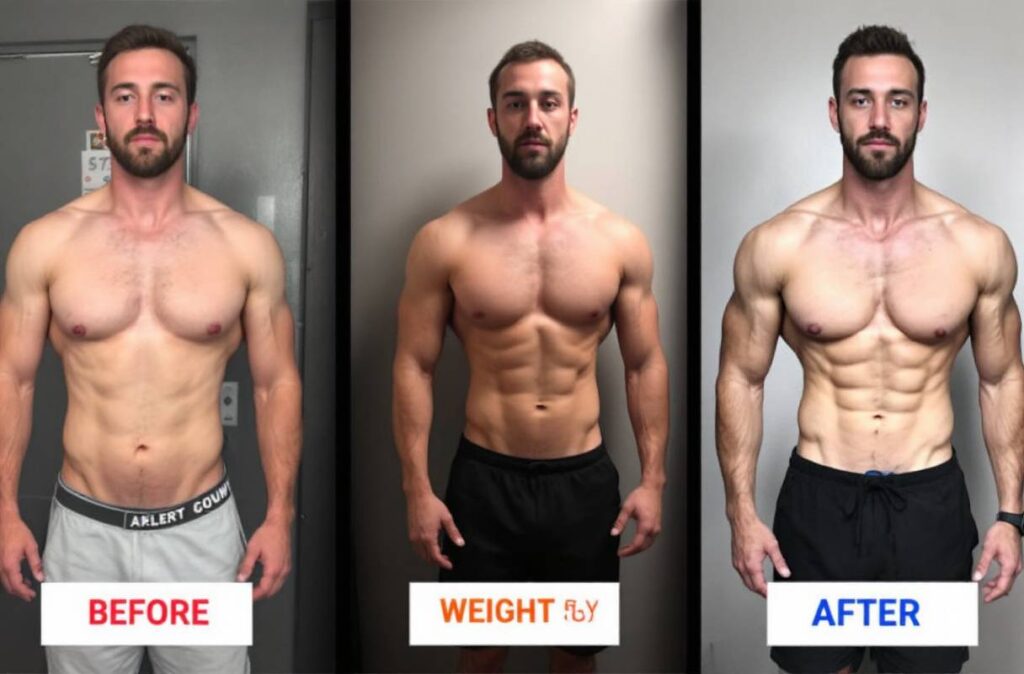
“Whey protein is unique among protein sources due to its rapid digestion and high leucine content, making it particularly effective for muscle protein synthesis and recovery.”
Dr. Stuart Phillips, Professor of Kinesiology at McMaster University
Muscle Growth and Repair
Whey protein is the champion of muscles. Jam-packed with amino acids, it’s particularly rich in BCAAs like leucine which kickstarts muscle building. It’s like handing your muscles the tools to grow and fix themselves after sweat-dripping gym sessions.
| Benefit | How It Works |
|---|---|
| Muscle Protein Build-Up | Triggered by amino acids, boost starts with leucine |
| Repair Work | Sorts out those tired muscles post-pump |
| Grow & Thrive | Nurtures muscle tissue for a bulkier you |
The real trick? Downing a shake post-workout. It’s like giving your muscles a treat, pushing them back into shape faster. Curious when to sip it? Check out our piece on when to take whey protein.
Weight Management
Whey isn’t just for the gym rats; it’s a pal for those watching their waistline too. It’s a secret weapon against hunger pangs and unnecessary munching, thanks to its high protein punch. Basically, you’re full faster and snack less, which helps in hitting those weight goals.
| What it Does | How it Helps |
|---|---|
| Feel Full | Keeps hunger at bay |
| Eat Smarter | Encourages smaller bites throughout the day |
| Burn Baby Burn | Gives a gentle nudge to your calorie furnace |
Folks on a high-protein kick find their metabolisms get a little more oomph, burning calories like a wood stove in winter. For more on slimming down with whey, pop over to whey protein for weight loss.
Aiding Recovery
Whey is a speedster when it comes to soaking into your muscles post-exercise. Sip it down after exercising, and it can refill your energy tanks and soothe those aching muscles quicker than you might think.
| Recovery Help | Benefit |
|---|---|
| Fast Action | Swift amino delivery to tired muscles |
| Energy Refill | Tops up those drained batteries post-workout |
| Soothes Aches | Works on easing those sore spots |
The quick uptake means you’re ready for round two much sooner, without long spells of hobbling or groaning. Want more diets on how it helps recovery? Dive into whey protein absorption.
Wrapping it up, whey protein powders are a win-win for building muscle, trimming the bod, and bouncing back from the grind of working out. Ready to explore types that suit you best? Check out our handy guide on choose whey protein.
Incorporating Whey Protein Powders into Your Routine
Mixing whey protein powders into your health and fitness game can be a game-changer for hitting your targets. Whether you’re shooting for building muscles, bouncing back quicker, or keeping your weight in check, timing matters for chowing down on whey protein.
Pre-Workout Power
Whey protein’s like your secret weapon before a workout. Downing it 30 to 60 minutes before you hit the gym pumps your muscles full of those all-important amino acids. It keeps your muscle mass in check and gears up your body for the sweat session ahead. Want more scoop on this? Peek at our whey protein guide.
| Time Before Workout | Recommended Protein Intake (g) |
|---|---|
| 30 minutes | 15-20 |
| 1 hour | 20-25 |
Post-Workout Boost
When your workout’s in the rearview, whey protein steps in as a muscle mender. Within half an hour of sweating it out, your muscles are all set to soak up the nutrients, including the amino acids, that whey offers. It’s a top player for muscle repair and slashing recovery times. Need more intel? Hit up our post on when to take whey protein.
| Time After Workout | Recommended Protein Intake (g) |
|---|---|
| Within 30 minutes | 20-30 |
Quick Meal Solutions
Whey protein’s also your one-stop shop for a quick meal swap. If you’re racing against the clock, it’s a fast and healthy stand-in for a complete meal. Toss it in a smoothie or shake, and you’re good to go, feeling full while ticking off your protein check-box for the day. For smoothie inspiration, check out our whey protein smoothie recipes.
| Meal Replacement | Recommended Protein Intake (g) |
|---|---|
| Breakfast or Lunch | 20-30 |
Adding whey protein to your routine can turbocharge your fitness success. Be it as a pre-workout motivator, post-gym recovery buddy, or a meal-time lifesaver, knowing the ropes is key for top-notch results. Curious about which whey protein fits your bill the best? Browse our insights on choose whey protein and get the lowdown on whey isolate vs concentrate.
Whey Protein Powder Myths, Busted
In the fitness scene, whey protein powder is surrounded by more tall tales than a fish story competition. Let’s clear up the confusion and get some facts straight.
Protein Powder and Bulking Up
Ever heard the yarn that just sipping on whey protein will turn you into the Hulk? Sorry to break it to you, but that’s pure fiction. Drinking whey isn’t your golden ticket to swale city all by itself. It’s like thinking a pizza makes itself just because you have dough. Sure, whey protein’s all about helping those muscles grow and repair, but you’ve got to put in some sweat equity at the gym to see real size.
| Myth | Fact |
|---|---|
| Whey protein alone creates a bulked-up body | Whey supports muscle repair but won’t pack on mass without strength workouts |
So for those wanting to just keep those muscles while staying lean, or ramp up their gym sessions, whey’s more your assistant than the lead actor. For more details, pop over to our piece on whey protein lean muscle.
Health Concerns and Misconceptions
Some folks are convinced that whey protein messes with your health, putting kidneys and bones at risk. Sounds scary, but studies say it’s more ghost story than reality for most folks, as long as you’re not chugging the whole tub in one go.
Got issues with lactose? Many whey products these days cater to this, with lactose-free whey protein shaking hands with those sensitive bellies. And if quality’s your middle name, pick up some grass-fed whey protein for a top-shelf choice.
| Health Concern | Reality |
|---|---|
| Whey protein wrecks kidneys | Sound for the kidneys if taken in moderation |
| Whey protein weakens bones | Keeps bones just fine |
| Can’t touch whey if you’re lactose intolerant | Plenty of lactose-free options exist |
Hungry for more of these debunked myths? Peek at our full rundown on whey protein myths.
Being wise to these myths lets fitness lovers and athletes make smart choices with their shakes. Chat with a doc or nutrition pro if you’re worried about adding whey to your pantry. For tips on timing your whey protein intake and knowing the right whey protein dosage, drift over to our other reads.
Protein Smoothie Recipes
Tossing some whey protein into your smoothie is a tasty and easy way to bump up that protein game of yours. We’ve whipped up three lip-smacking recipes to help you crush your fitness goals and leave you wanting more.
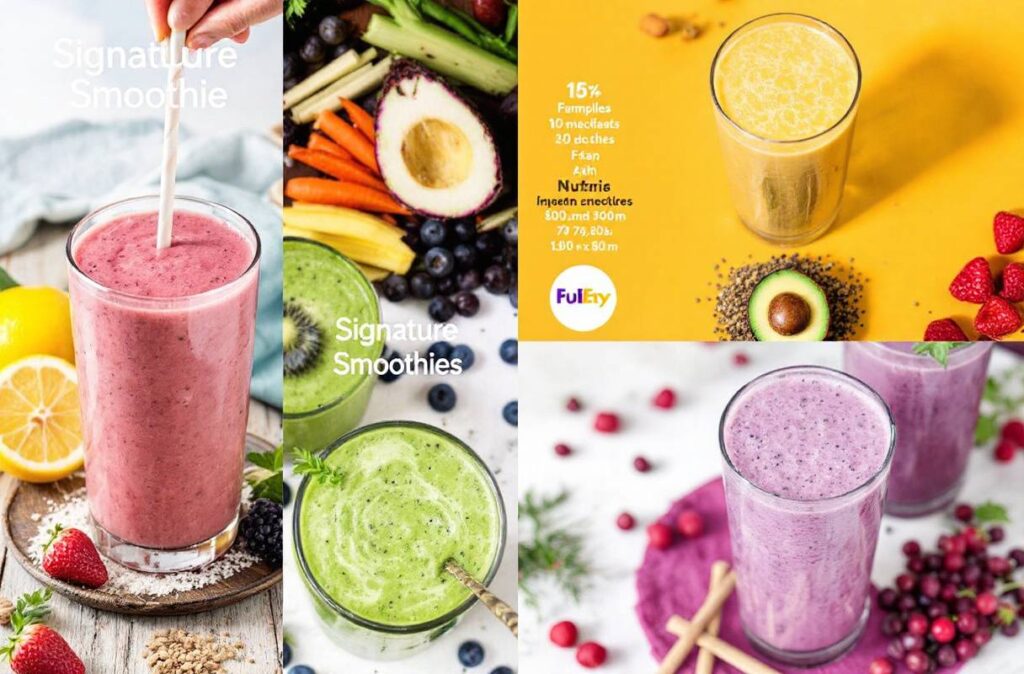
Protein-Packed Fruit Smoothie
This smoothie is your go-to for a quick breakfast or to refuel after breaking a sweat. It’s crammed with goodies to keep you buzzing and your muscles pumped.
Ingredients:
- 1 scoop whey protein powder
- 1 cup mixed frozen berries
- 1 banana
- 1 cup unsweetened almond milk
- 1 tablespoon chia seeds
Instructions:
- Toss all the goodies in a blender.
- Whirl it around till smooth.
- Pour it up and slurp!
Nutritional Bites:
| Nutrient | Amount |
|---|---|
| Calories | 250 |
| Protein | 25g |
| Carbs | 30g |
| Fat | 5g |
For more yummy options, head on over to our whey protein smoothie recipes.
Chocolate Peanut Butter Protein Shake
Satisfy your chocolate-peanutty cravings while loading up on protein. Can’t beat a combo like chocolate and peanut butter, can you?
Ingredients:
- 1 scoop chocolate whey protein powder
- 1 cup low-fat milk
- 1 tablespoon natural peanut butter
- 1 tablespoon cocoa powder
- A handful of ice cubes
Instructions:
- Chuck everything into a blender.
- Blend till it’s all nice and creamy.
- Drink it up, pronto!
Nutritional Bites:
| Nutrient | Amount |
|---|---|
| Calories | 300 |
| Protein | 30g |
| Carbs | 15g |
| Fat | 12g |
Want to know more about picking the right protein powder? Browse our article on choosing whey protein.
Green Power Protein Smoothie
Get your greens with this refreshing powerhouse of protein and veggies. Perfect for sneaking in those greens without a fuss.
Ingredients:
- 1 scoop vanilla whey protein powder
- 1 cup spinach leaves
- 1/2 avocado
- 1/2 cup Greek yogurt
- 1 cup coconut water
Instructions:
- Blend until it’s smooth and rich.
- Sip and enjoy the veggie-filled goodness.
Nutritional Bites:
| Nutrient | Amount |
|---|---|
| Calories | 320 |
| Protein | 28g |
| Carbs | 20g |
| Fat | 15g |
For advice on how whey protein fits into your diet, peep our guide on whey protein absorption.
Give these protein-packed smoothie recipes a spin to help nail those fitness targets. From whey protein for women to whey protein for shedding pounds, explore more ways to juice up your protein intake.
Tips for Effective Usage
Proper Dosage Guidelines
Getting the right amount of whey protein powder can make a big difference in your results. Fitness intentions, how active you are, and what your body requires all play a role in figuring this out. Most folks do well with about 20 to 50 grams each day. Need specifics? We got you covered with a full rundown on whey protein dosage.
| Fitness Goal | Daily Dosage (grams) |
|---|---|
| Muscle Growth | 25 – 30 |
| Weight Loss | 20 – 25 |
| Maintenance | 15 – 20 |
Bumping up your intake when you’re more active can push your results even further. After a workout, a bigger dose can help those muscles bounce back. Just make sure you’re counting all your protein from food, so things don’t go overboard.
Hydration and Balanced Diet Importance
Keeping up with your water and eating right is just as important as the protein itself. Sure, whey helps with building muscle and recovery, but it’s really a team player in a balanced diet. Some tips worth remembering:
- Hydration: Keep the water flowing to help with processing the protein and avoiding getting parched.
- Balanced Diet: Mix in some carbs, fats, and vitamins to keep your overall health in check while nailing your fitness targets.
You might wanna peek at our piece on keeping a balanced diet with whey protein for more info.
Consulting a Nutritionist or Trainer
Having a chat with a nutritionist or trainer can steer your whey game in the right direction. They’re great for offering advice like:
- Tweaking dosages to match what you’re going for.
- Mixing whey protein with other plans and supplements.
- Customizing for dietary quirks like those who need lactose-free whey protein.
Getting an expert opinion means you’re getting the most out of your whey protein without risking your health. We also bust some myths in our piece on whey protein myths if you’re curious about dodging the common pitfalls.
Stick with these suggestions, and whether you’re a workout newbie or a seasoned athlete, you’ll find whey protein a worthwhile addition. Get creative with the whey protein smoothie recipes we put together for some tasty options.
Conclusion
As we’ve explored the world of whey protein powders, it’s clear they’re more than just another supplement on the shelf.
Whether you’re choosing between concentrate, isolate, or hydrolysate, each type offers unique benefits tailored to different fitness goals and dietary needs.
Remember, the key to success lies not just in choosing the right powder, but in using it strategically alongside proper nutrition and training. From supporting muscle growth and accelerating recovery to aiding weight management, whey protein has earned its reputation as a versatile fitness ally. By following proper dosage guidelines, staying hydrated, and maintaining a balanced diet, you can harness the full potential of whey protein to transform your fitness journey.
Ready to take your nutrition game to the next level? The perfect scoop of success awaits!
FAQs
What’s the difference between whey protein concentrate, isolate, and hydrolysate?
Concentrate contains 70-80% protein with some lactose and fat, isolate is 90%+ protein with minimal lactose and fat, and hydrolysate is pre-digested for faster absorption.
When is the best time to take whey protein?
Key times include 30-60 minutes pre-workout, within 30 minutes post-workout, and as a meal replacement when needed. Timing can be adjusted based on your specific goals.
How much whey protein should I take daily?
Daily intake varies by goals: 25-30g for muscle growth, 20-25g for weight loss, and 15-20g for maintenance. Consider your total protein intake from all sources.
Can whey protein cause weight gain?
While whey protein can support muscle gain, it won’t cause unwanted weight gain unless consumed in excess of your daily caloric needs.
Is whey protein safe for everyone?
While generally safe, those with lactose intolerance should choose isolate or hydrolysate. Always consult a healthcare provider before starting any supplement regimen.
Additional Resources
Journal of the International Society of Sports Nutrition: Whey Protein Review https://jissn.biomedcentral.com/articles/10.1186/s12970-018-0242-y
Academy of Nutrition and Dietetics: Protein and the Athlete
https://www.eatright.org/fitness/sports-and-performance/fueling-your-workout/protein-and-the-athlete
Examine.com: Whey Protein Research Analysis
https://examine.com/supplements/whey-protein/
Sports Medicine Journal: Protein Supplementation in Athletes
https://link.springer.com/journal/40279

